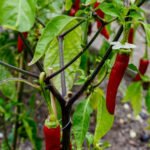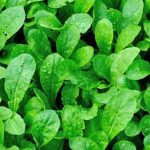Vegetable gardening enthusiasts know that starting your own vegetable garden can be a rewarding and fulfilling experience. This vegetable gardening guide will provide you with all the essential information you need to get started on your journey to growing your own fresh produce right in your backyard. Whether you are a beginner or have some experience, this guide will offer valuable insights and tips to help you create a thriving vegetable garden.
To begin your vegetable gardening journey, it is crucial to choose the right location for your garden. Factors such as sunlight exposure, soil quality, and accessibility are key considerations when selecting the perfect spot for your vegetables to grow. By understanding how these factors impact plant growth and productivity, you can ensure the success of your garden from the start.
Equipped with the essential tools and supplies outlined in this guide, you will be well-prepared to tackle any challenges that come your way as you nurture your vegetable garden. From soil preparation and fertilization techniques to watering systems and pest management strategies, this guide covers all aspects of vegetable gardening to help you achieve bountiful harvests season after season.
Let’s dive into the world of vegetable gardening and explore the steps needed to kickstart your own homegrown oasis of fresh produce.
Choosing the Right Location for Your Vegetable Garden
When it comes to vegetable gardening, one of the key factors for successful growth is choosing the right location for your garden. The location can greatly impact the health and productivity of your vegetables, so it’s important to consider some key factors before getting started.
Sunlight Exposure
One of the most critical factors in selecting a location for your vegetable garden is sunlight exposure. Most vegetables require a minimum of 6-8 hours of sunlight per day to thrive. Ensure that your chosen spot receives adequate sunlight throughout the day to promote healthy plant growth and development.
Soil Quality
Another essential consideration when choosing a location for your vegetable garden is soil quality. Vegetables grow best in well-draining, fertile soil with a pH level between 6.0 and 7.0. Conduct a soil test in your potential garden area to determine its nutrient levels and pH balance. If necessary, amend the soil with organic matter like compost or manure to improve its quality.
Accessibility and Convenience
Consider the convenience and accessibility of your chosen garden location. It should be easily accessible for watering, weeding, harvesting, and other maintenance tasks. Additionally, proximity to a water source is crucial for efficient watering practices. Choose a location that is convenient for you to regularly tend to your vegetable garden without too much hassle.
By carefully selecting the right location for your vegetable garden based on factors like sunlight exposure, soil quality, and accessibility, you can set yourself up for a successful harvest season. Remember to also consider factors like proper air circulation, protection from strong winds, and potential shading from buildings or trees when choosing the perfect spot for your vegetable gardening venture.
Essential Tools and Supplies for Successful Vegetable Gardening
Basic Tools for Vegetable Gardening
When it comes to starting a successful vegetable garden, having the right tools and supplies can make all the difference. Some basic tools that every vegetable gardener should have in their arsenal include a hand trowel, a garden fork, a hoe, gardening gloves, and a watering can or hose. These tools will help you with tasks such as planting, weeding, and watering your vegetables.
Protective Gear for Safe Gardening
In addition to basic tools, it’s important to have the right protective gear to ensure safe gardening practices. This includes wearing sturdy gardening gloves to protect your hands from thorns and sharp edges while working in the garden. Additionally, investing in a wide-brimmed hat and sunscreen can help protect your skin from the sun’s harmful rays during long hours spent tending to your plants.
Supplies for Soil Health and Plant Nutrition
Apart from tools, having the right supplies for soil health and plant nutrition is crucial for successful vegetable gardening. This includes organic compost or fertilizer to provide essential nutrients to your plants. Mulch is another important supply that helps retain moisture in the soil, suppress weeds, and regulate soil temperature. By investing in these supplies, you can ensure that your vegetables have everything they need to thrive and produce a bountiful harvest.
By equipping yourself with these essential tools and supplies for vegetable gardening, you’ll be well on your way to creating a thriving garden filled with fresh produce. Remember that having the right equipment not only makes gardening easier but also contributes to healthier plants and higher yields. With proper planning and investment in quality tools and supplies, your vegetable garden is sure to flourish throughout the growing season.
Planning Your Vegetable Garden Layout
When it comes to planning your vegetable garden layout, there are several important factors to consider in order to maximize your garden’s potential and ensure a successful harvest. Here are some tips and tricks to help you design the perfect layout for your vegetable garden:
- Consider the Sunlight: Before planting your vegetables, observe how the sunlight falls on your garden area throughout the day. Most vegetables require at least 6-8 hours of direct sunlight, so make sure to plan your layout accordingly.
- Grouping Similar Vegetables: Another key aspect of planning your vegetable garden layout is grouping together vegetables with similar water, soil, and sunlight requirements. This not only helps with efficient watering and fertilization but also makes it easier to manage pests and diseases.
- Companion Planting: Utilize companion planting techniques to enhance the growth and flavor of your vegetables. For example, planting basil alongside tomatoes can improve tomato flavor and deter pests naturally.
Additionally, incorporating vertical gardening techniques can help maximize limited space and increase yield per square foot. Consider using trellises or cages for climbing plants like cucumbers or beans.
When planning your vegetable garden layout, don’t forget about pathways between beds for easy access to each plant without compacting the soil. Proper spacing between rows and plants is essential to allow for proper air circulation, prevent overcrowding, and facilitate harvesting.
Remember that flexibility is key when designing your vegetable garden layout. Be prepared to adjust as needed based on how certain plants are performing in specific spots within your garden. By following these tips and tricks, you’ll be well on your way to creating a productive and visually pleasing vegetable garden that will provide you with a bountiful harvest throughout the growing season.
Selecting the Best Vegetables for Your Garden Based on Climate and Location
When it comes to choosing the vegetables to grow in your garden, it’s essential to consider the climate and location where you are planting. Different vegetables thrive in specific climates and soil conditions, so it’s crucial to select varieties that will do well in your area. Here are some tips on selecting the best vegetables for your garden based on climate and location:
- Check Your Hardiness Zone: Before choosing which vegetables to plant, determine your hardiness zone. This will help you select plants that are suitable for your region’s temperature and growing conditions.
- Consider Sunlight Requirements: Make sure to choose vegetables that match the sunlight levels in your garden. Some plants require full sun, while others can tolerate partial shade.
- Take into Account Soil Type: Different vegetables have specific soil preferences. If you have sandy soil, choose vegetables like carrots or radishes that thrive in well-draining soil. For clay soil, opt for plants like cabbage or kale that can withstand heavier soil.
Additionally, consider the length of your growing season when selecting vegetables for your garden. Some crops, like tomatoes and peppers, require a long growing season with warm temperatures to produce a bountiful harvest. On the other hand, quick-growing vegetables such as lettuce and radishes can be harvested earlier in the season before temperatures rise.
Remember that variety selection is key when planning a vegetable garden tailored to your climate and location. By choosing the right vegetables based on these factors, you’ll increase your chances of a successful harvest and enjoy fresh produce from your garden throughout the growing season.
Soil Preparation and Fertilization
One common method of improving soil fertility is through the addition of organic matter such as compost or well-rotted manure. These materials not only provide essential nutrients to the plants but also help improve soil structure, water retention, and drainage. Incorporating organic matter into your soil before planting will create a rich growing environment that will benefit your vegetables throughout the growing season.
In addition to organic matter, you may need to supplement your soil with specific nutrients based on the needs of the vegetables you plan to grow. This can be done through the use of organic or synthetic fertilizers. When applying fertilizers, it’s important to follow instructions carefully to avoid over-fertilization, which can harm your plants. Remember that different vegetables have varying nutrient requirements, so it’s crucial to tailor your fertilizer application accordingly.
| Soil Preparation Tips | Fertilization Guidelines |
|---|---|
| Test soil pH and nutrient levels before planting | Use organic matter like compost or manure for improved fertility |
| Amend soil based on test results for optimal plant growth | Supplement soil with specific nutrients as needed |
| Consider crop rotation to maintain soil health | Follow instructions when applying fertilizers to avoid over-fertilization |
Watering and Irrigation Systems for Optimum Plant Health
One of the most critical aspects of maintaining a healthy and thriving vegetable garden is ensuring proper watering and irrigation. Adequate hydration is essential for the growth and development of your plants, as water plays a vital role in nutrient uptake and overall plant health. In this section of the vegetable gardening guide, we will discuss the various watering and irrigation systems you can implement to ensure your plants receive the right amount of water at the right time.
To start, it’s important to understand that different vegetables have varying water requirements based on their type, size, and growth stage. Some vegetables, such as tomatoes and cucumbers, require consistent moisture to prevent issues like blossom end rot, while others like peppers and eggplants prefer slightly drier conditions. By researching the specific needs of each vegetable in your garden, you can create a customized watering schedule that meets their individual requirements.
When it comes to selecting a watering system for your garden, there are several options to consider. Traditional methods like hand watering with a hose or watering can provide precise control over where water is delivered but can be time-consuming for larger gardens. Drip irrigation systems are an efficient alternative that delivers water directly to the base of plants, reducing evaporation and minimizing weed growth.
For those looking for a hands-off approach, automated sprinkler systems or soaker hoses can also be effective in maintaining consistent soil moisture levels in your vegetable garden. Ultimately, choosing the right watering system depends on factors like garden size, plant types, and personal preferences.
Pest and Disease Management in Vegetable Gardens
When it comes to maintaining a healthy and thriving vegetable garden, pest and disease management are crucial aspects to consider. Using natural remedies not only helps protect your plants from harmful chemicals but also promotes a more sustainable approach to gardening. One effective method of prevention is planting companion crops that naturally repel pests or attract beneficial insects. For example, planting marigolds around your tomato plants can help deter nematodes, aphids, and other common garden pests.
Another natural remedy for pest control is the use of homemade insecticidal soaps. These can be made using simple ingredients like water, liquid soap, and essential oils that have insect-repelling properties. Regularly spraying these solutions on your plants can help keep common pests at bay without harming beneficial insects like ladybugs or bees. Additionally, introducing predatory insects such as ladybugs or lacewings to your garden can help control pest populations in a natural and eco-friendly way.
In terms of disease prevention, practicing good garden hygiene is essential. This includes regularly removing any diseased plant material, sanitizing tools between uses, and avoiding working in wet conditions that can promote the spread of fungal diseases. Crop rotation is another effective method to prevent the buildup of soil-borne diseases in your vegetable garden. By planting different families of vegetables in different areas each year, you reduce the likelihood of pathogens affecting your crops.
| Natural Remedy | Effectiveness |
|---|---|
| Companion planting | High |
| Insecticidal soaps | Moderate |
| Predatory insects introduction | Effective |
Harvesting and Storing Your Homegrown Vegetables
One of the most rewarding aspects of vegetable gardening is being able to enjoy the fruits of your labor by harvesting and storing your homegrown vegetables. Whether you are growing tomatoes, lettuce, carrots, or bell peppers, knowing when and how to harvest your produce is essential to ensure maximum flavor and freshness.
Each type of vegetable has its own specific harvesting requirements, so it’s important to do some research or consult a vegetable gardening guide to make sure you’re picking them at the right time.
When it comes to harvesting vegetables, timing is key. For example, tomatoes should be picked when they are fully ripe but still firm, while lettuce leaves can be harvested once they reach a desirable size. It’s also important to use sharp shears or scissors to prevent damaging the plants during harvest.
After harvesting your vegetables, it’s crucial to properly store them to maintain their quality and shelf life. Some vegetables can be stored in a cool, dark place for weeks or even months, while others are best enjoyed fresh from the garden.
Properly storing your homegrown vegetables can help extend their shelf life and preserve their flavor. For root vegetables like carrots and potatoes, remove any excess soil before storing them in a cool, dry place such as a cellar or pantry.
Leafy greens like lettuce and spinach should be washed and dried thoroughly before storing them in airtight containers in the refrigerator. By following these simple storage tips and guidelines from a reliable vegetable gardening guide, you can enjoy your freshly harvested produce for weeks to come.
Conclusion
In conclusion, starting a vegetable garden can be a rewarding and fulfilling experience that allows you to enjoy the fruits of your labor. By following the steps outlined in this comprehensive vegetable gardening guide, you can create a thriving garden that provides you with an abundance of fresh, healthy produce.
From choosing the right location and tools to selecting the best vegetables for your climate, proper soil preparation, watering techniques, and pest management strategies, each step plays a crucial role in the success of your garden.
As you watch your plants grow and flourish, you will feel a sense of pride and accomplishment knowing that you have nurtured them from seeds to harvest. The joy of harvesting your own homegrown vegetables and incorporating them into delicious meals is unmatched. Not only does vegetable gardening provide you with a sustainable source of fresh produce, but it also fosters a deeper connection to nature and promotes overall well-being.
So, as you embark on your vegetable gardening journey, remember to be patient, stay committed, and enjoy the process. Gardening is not just about the end result; it’s about getting your hands dirty, learning from experience, and savoring the satisfaction that comes with seeing your efforts come to fruition. May your vegetable garden thrive and bring you endless joy for seasons to come. Happy gardening.
Frequently Asked Questions
What Is a Good Layout for a Vegetable Garden?
A good layout for a vegetable garden typically involves arranging the plants in rows or raised beds to maximize space and sunlight exposure. It’s essential to consider factors like plant spacing, crop rotation, and companion planting to promote healthy growth and minimize pests and diseases.
What Order Should I Plant My Vegetable Garden?
When deciding on the order to plant vegetables in your garden, it’s crucial to consider each plant’s specific needs for sunlight, water, and soil nutrients. Generally, you should start by planting taller plants in the north of the garden to prevent shading smaller ones. Additionally, grouping vegetables with similar watering requirements can make maintenance easier.
What Is the Best Month to Start a Vegetable Garden?
The best month to start a vegetable garden varies depending on your location and the specific crops you want to grow. In general, early spring is an ideal time for cool-season vegetables like lettuce and peas, while warm-season crops such as tomatoes and peppers are typically planted after the last frost date in late spring or early summer.
Ultimately, it’s essential to research the optimal planting times for your particular region and climate.

If you’re looking to get into vegetable gardening, or are just looking for some tips on how to make your current garden better, then you’ve come to the right place! My name is Ethel and I have been gardening for years. In this blog, I’m going to share with you some of my best tips on how to create a successful vegetable garden.





